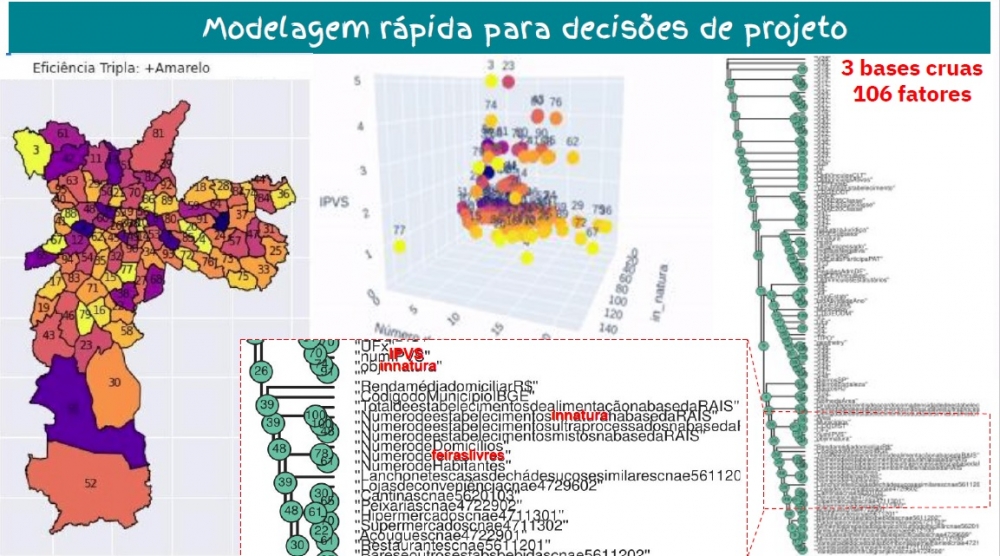


The software identifies critical neighborhoods on the basis of data for numbers of street markets, grocery stores, eateries and residents, among others (image: Alexandre Delbem/USP)
Published on 09/27/2023
Agência FAPESP* – Algorithms developed by researchers affiliated with the Center for Artificial Intelligence (C4AI) are able to identify the parts of a city that lack food supply infrastructure and adequate food outlets by analyzing and interpreting data from hundreds of different databases.
The innovation is designed to show where local government, a company or an organization of another kind needs to act in order to make more precise and efficient decisions regarding food insecurity.
C4AI is an Engineering Research Center (ERC) established by FAPESP and IBM at the University of São Paulo’s Innovation Center (INOVA-USP).
One of the prototypes created by the researchers was designed to identify hunger-prone areas of São Paulo city, in Brazil, on the basis of requirements specified by two inter-institutional groups that operate there to improve food quality via actions and policies. In this case, the solution was given open data from the federal government of Brazil, from IBGE (the national statistics bureau) and from CONAB, the government’s food supply agency, as well as food industry data such as numbers of establishments selling food by area, including street markets, grocery stores, snack bars and diners.
“Integrating data from different sources is a problem in Brazil, partly because the country is so huge. Also because there are many separate databases. In smaller, wealthier countries, it’s much easier. We’re working to integrate more than 100 databases. Our solution uses artificial intelligence to cross-reference the data and pinpoint the most critical locations, among other kinds of analysis,” said Alexandre Delbem, professor of computer systems at the Institute of Mathematical and Computer Sciences (ICMC-USP) and a member of C4AI.
The new technology, which he developed in 11 days, can map multiple areas and autonomously adapt to different kinds of information. “It adapts to the data it processes and discovers on its own how to cross-reference complementary data, even in small amounts, to optimize its contribution to decision-making. You feed the AI algorithms with raw, unprocessed data. They interpret the data and present results and predictions in reports, spreadsheets, graphics and maps,” he said.
Because they adapt to all kinds of data, the AI algorithms can also collect data on climate change and predict possible or probable crop shortfalls, as well as helping to address the problems caused by drought. “Farmers can use them to prepare well in advance. Any decision-maker can analyze whatever aspect is relevant. The solution can be fed any kind of data,” Delbem said.
The innovation can also facilitate communication between professionals in different areas, as the technology is able to combine data on the same object in different locations. “It connects the information and presents reliable data to support decision-making. Municipal administrators will be able to talk to each other, and this will help city hall departments make joint decisions,” Delbem said.
* With information from C4AI’s public relations office.
Source: https://agencia.fapesp.br/44959